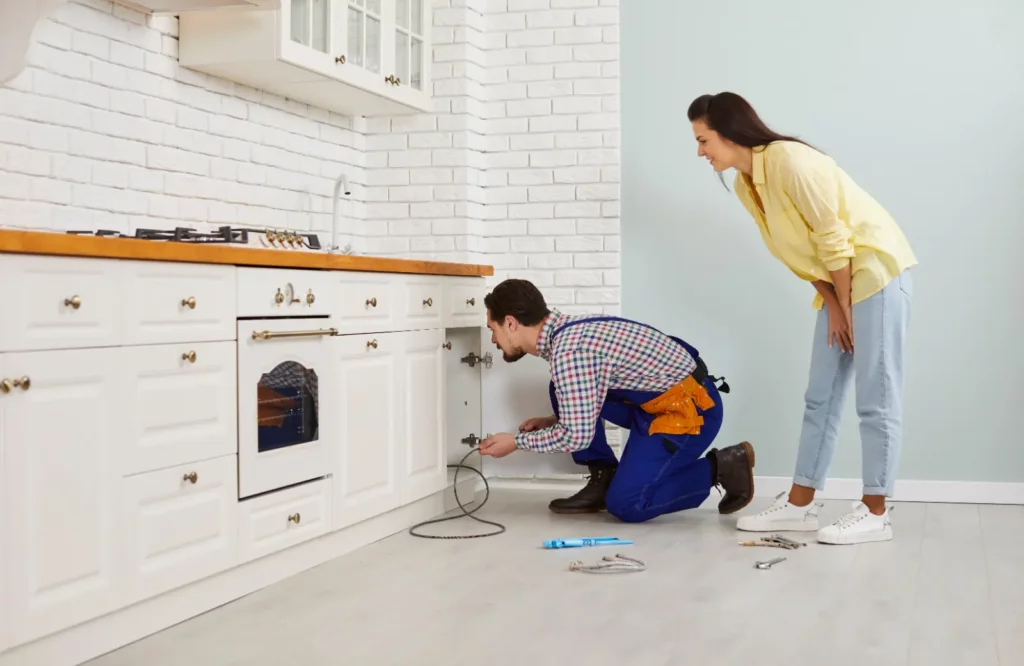Are you tired of dealing with the nightmare of a flooded basement? Look no further because we have the solution you’ve been waiting for!
When it comes to preventing basement floods, having a top-notch sump pump is crucial. But with so many options out there, how do you know which one to choose?
In this discussion, we will explore the top sump pumps that will keep your basement dry and give you peace of mind. Don’t miss out on this essential information that could save you from costly water damage.
Key Takeaways
- There are different types of sump pumps to consider, such as pedestal and submersible pumps, as well as battery backup options.
- Important factors to consider when choosing a sump pump include basement size, rainfall, and budget.
- Key features to consider include pump horsepower, switch type, and construction materials for durability.
- It is important to research and choose a sump pump with a reliable brand reputation and positive customer reviews.
Types of Sump Pumps
There are several types of sump pumps that you can choose from to protect your basement from flooding. When it comes to sump pump maintenance, it’s essential to select the right type for your needs. Different sump pump brands offer various models, each with its own unique features and benefits.
The first type of sump pump is the pedestal sump pump. This type of pump is installed above the sump pit, with the motor located on a pedestal above the water level. The advantage of a pedestal sump pump is easy access for maintenance and repairs. However, it may not be as efficient as other types.
Another option is the submersible sump pump. This type of pump is designed to be submerged in the sump pit, making it quieter and more discreet. Submersible pumps are typically more powerful and can handle larger volumes of water. They’re also known for their durability and reliability.
For those looking for a combination of power and convenience, a battery backup sump pump is a great choice. This type of pump is designed to provide backup power in case of a power outage. It ensures that your basement remains protected even when the electricity goes out.
When choosing a sump pump, it’s important to consider factors such as the size of your basement, the amount of rainfall in your area, and your budget. Research different sump pump brands and read reviews to find the one that best suits your needs.
Key Features to Consider
To ensure you choose the right sump pump for your basement flood prevention needs, it’s important to carefully consider key features that will best suit your requirements. Sump pump manufacturers offer a variety of options, so it’s crucial to understand what features are essential for your specific situation.
One key feature to consider is the pump’s horsepower. The horsepower determines the pump’s ability to move water efficiently. For most residential basements, a 1/3 or 1/2 horsepower pump should be sufficient. However, if you have a larger basement or anticipate heavy water flow, you may need a more powerful pump.
Another important feature is the pump’s switch type. The switch is responsible for activating the pump when the water level rises. The most common switch types are the tethered float switch and the vertical float switch. The tethered float switch hangs down into the pit and moves up and down with the water level. The vertical float switch is attached to a rod and moves vertically. Both types have their advantages, so choose one that fits your space and needs.
Additionally, consider the pump’s construction materials. Look for pumps made of durable materials such as cast iron or stainless steel. These materials are resistant to corrosion and can withstand heavy usage over time.
Lastly, it’s essential to be aware of common sump pump problems. These can include clogging, motor failure, or switch malfunctions. To mitigate these issues, choose a pump with a reliable brand reputation and positive customer reviews.
Sump Pump Installation Tips
To ensure effective installation, follow these tips for installing a sump pump in your basement.
- Choose the right location for your sump pump. It should be installed in the lowest point of your basement, where water is most likely to accumulate. Make sure the sump pit is deep enough to accommodate the pump and has enough capacity to hold the water.
- Ensure a proper discharge system. Connect the sump pump to a discharge pipe that leads water away from your foundation. The pipe should be directed towards a downhill slope or a drainage system to prevent water from flowing back into your basement.
- Properly seal the sump pit to prevent water leakage. Use a tight-fitting cover to keep out debris and prevent odors. Additionally, consider installing a check valve on the discharge pipe to prevent water from flowing back into the sump pit after the pump shuts off.
- Regularly inspect and maintain your sump pump. Test it by pouring water into the pit to ensure it activates and pumps water out effectively. Clean the pump and remove any debris that may clog the intake or impeller. Replace the battery backup if your sump pump has one, as it can lose its efficiency over time.
Maintenance and Troubleshooting
Now that your sump pump is installed, it’s important to know how to properly maintain it and troubleshoot any issues that may arise.
Regular maintenance, such as checking for debris and testing the pump, can help ensure its effectiveness.
In case of any problems, having a troubleshooting guide handy will help you quickly identify and fix the issue, keeping your basement safe from potential floods.
Maintenance Tips
Regular maintenance is crucial for ensuring the optimal performance of your sump pump in preventing basement floods. Here is a maintenance checklist to keep your sump pump functioning effectively and to avoid common sump pump problems:
- Test the pump regularly: Take the time to test your sump pump to ensure it’s in good working condition. This simple step can save you from a potential disaster.
- Clean the sump pit: Regularly clean the sump pit to prevent debris from clogging the pump. A clean sump pit allows the pump to function efficiently.
- Inspect the discharge line: Check the discharge line for any clogs or obstructions. A clear discharge line ensures the water is properly directed away from your basement.
Troubleshooting Guide
After ensuring the regular maintenance of your sump pump, it’s important to be prepared to troubleshoot any issues that may arise.
One common problem with sump pumps is excessive noise. If your sump pump is making a loud grinding or rattling noise, it could indicate a problem with the motor or impeller. In this case, it’s best to turn off the pump and call a professional for assistance.
Another common issue is a sump pump that fails to turn on or off automatically. This can be caused by a faulty float switch or a problem with the power supply. Check the float switch for any debris or obstructions, and make sure the power supply is functioning properly. If the problem persists, it’s recommended to contact a qualified technician for further diagnosis and repair.
Sump Pump Backup Options
Consider using a battery-powered backup sump pump to ensure your basement remains flood-free even during power outages. When it comes to protecting your home from water damage, having a reliable backup power source for your sump pump is crucial. Here are three reasons why a battery backup sump pump is a great option for you:
- Peace of mind: With a battery backup sump pump, you can have peace of mind knowing that your basement will stay dry, even if the power goes out. This is especially important during severe storms or when you’re away from home and unable to monitor your sump pump.
- Reliable protection: A battery backup sump pump is designed to kick in automatically when it detects a power outage or if the primary sump pump fails. This ensures that water is continuously pumped out of your basement, preventing any potential flooding or water damage.
- Easy installation: Battery backup sump pumps are typically easy to install and require minimal maintenance. They’re designed to work alongside your existing sump pump system, providing an extra layer of protection without the need for major modifications or renovations.
Investing in a battery-powered backup sump pump is a wise decision for any homeowner. It offers reliable protection, peace of mind, and easy installation. By choosing this backup option, you can belong to a community of homeowners who prioritize the safety and well-being of their homes.
Don’t wait for a power outage to cause a flooded basement – take action now and ensure your basement remains dry and flood-free.
Choosing the Right Sump Pump Size
To ensure optimal performance and effectiveness, selecting the proper sump pump size is essential for preventing basement flooding. When it comes to choosing the right sump pump size, you need to consider the sump pump capacity and make accurate calculations.
The sump pump capacity refers to the amount of water the pump can handle in a given time period. If the pump is too small, it may not be able to keep up with the amount of water entering the sump pit during heavy rainstorms, leading to flooding. On the other hand, if the pump is too large, it may cycle on and off too frequently, causing unnecessary wear and tear.
To determine the appropriate pump size, you can use a pump size calculation. This calculation takes into account factors such as the size of your basement, the volume of water that needs to be pumped out, and the vertical distance the water needs to be lifted. By considering these factors, you can determine the pump’s capacity requirements.
It’s important to note that selecting the right sump pump size isn’t a one-size-fits-all approach. Each basement is unique, and the water flow can vary depending on factors like soil composition and geographical location. That’s why it’s crucial to consult with a professional or do thorough research to ensure you choose the right sump pump size for your specific needs.
Final Thoughts
Overall, when it comes to preventing basement floods, investing in a reliable sump pump is crucial. With various types and features available, it’s important to choose the right one for your specific needs.
Proper installation, regular maintenance, and backup options are also essential for optimal performance. By selecting the appropriate size and taking necessary precautions, you can effectively safeguard your basement from potential water damage.
Don’t wait until it’s too late – prioritize flood prevention with a top-rated sump pump.

